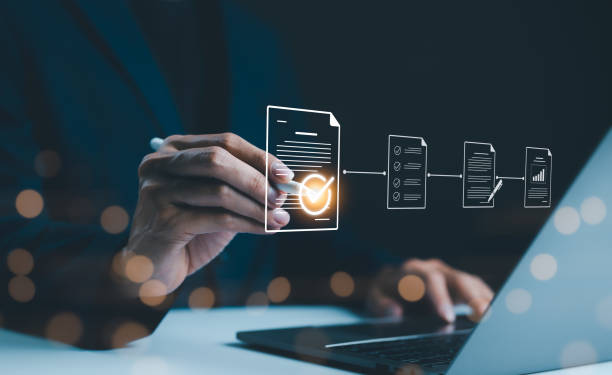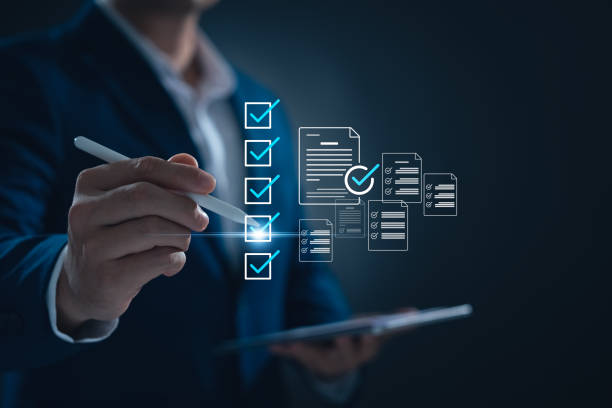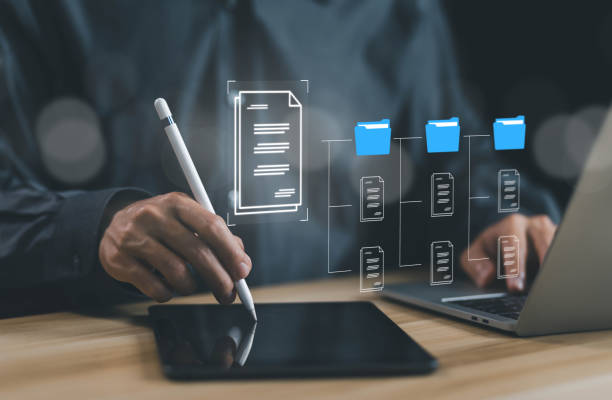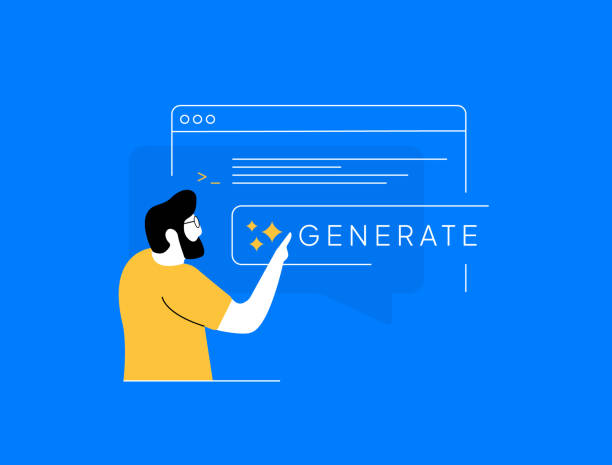Introduction to On-Page SEO and Its Importance

In today’s highly competitive digital world, gaining visibility among a multitude of websites and content is a major challenge.
In this context, #On-page SEO emerges as the backbone of any search engine optimization strategy.
This part of SEO focuses on improving various elements within a website so that its pages become more understandable and appealing to search engines like Google, thus achieving better rankings.
Although many focus on off-page SEO and link building, without strong on-page SEO, external efforts will not yield the desired results.
On-page SEO includes optimizing elements such as page titles, meta descriptions, headings, content, images, and URL structure.
The main goal of this section is to send clear and relevant signals to search engines about the topic and quality of your content.
This not only helps search engines better understand your content but also improves user experience, which is itself a crucial ranking factor.
Did you know that even the smallest changes in a page’s internal elements can have a profound impact on its position in search results? This is an educational and vital section for any webmaster who wants to increase their site’s organic traffic.
A precise understanding of these concepts is the first step towards achieving success in the online world.
Are you falling behind in the competition with large online stores?
RasaWeb can bring your business online with professional e-commerce website design, increasing your market share!
✅ Boost brand credibility and customer trust
✅ Easy shopping experience leading to more sales
⚡ Act now to get a free website design consultation!
The Role of Keywords in On-Page SEO Strategy
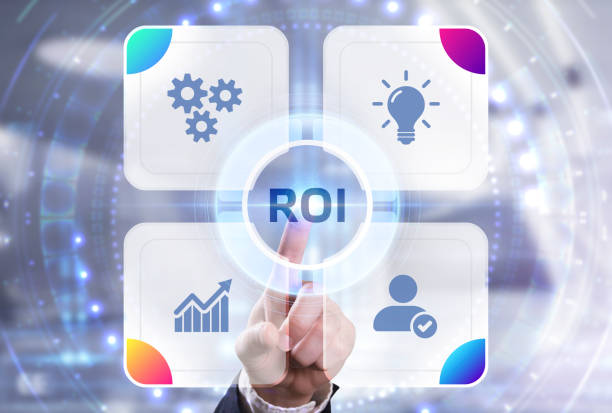
Keywords are the cornerstone of any on-page SEO strategy.
The correct selection and use of these words determine the path to your website’s success.
Beyond simply finding high-volume keywords, what matters is understanding user search intent.
Is the user looking for information, planning to buy, or seeking directions? Your content must address this intent.
Natural and logical use of keywords throughout the text, from the title to the main body, is highly important.
Don’t overlook long-tail keywords, which are more specific and less competitive.
These keywords often have higher conversion rates and can drive more targeted traffic to your site.
Keyword optimization is not just about the number of times they are repeated; it’s about how they are integrated into the content in a way that is meaningful for both users and search engines.
A specialized approach in this area involves using keyword research tools to find hidden opportunities and understand search volume and competition.
This stage can make the difference between a page’s success and failure.
Are you using the latest keyword research techniques to improve your on-page optimization? This is a thought-provoking content that makes you think.
Optimizing On-Page Elements: From Title to Meta Descriptions
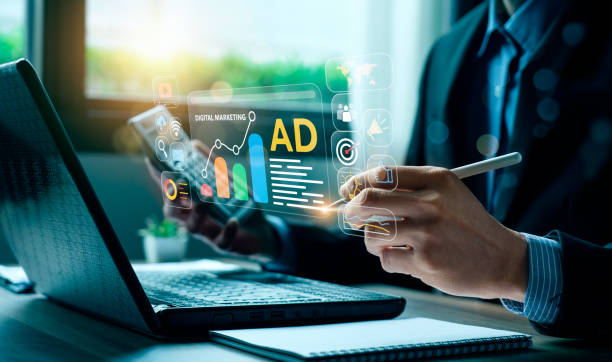
Optimizing On-Page elements forms the core of on-page SEO and includes a set of explanatory and practical actions that help search engines better understand your content.
The first and perhaps most important element is the Title Tag.
This tag should include your main keyword and concisely and attractively describe the page’s nature; not only for search engines but also for users who see it in search results.
Meta Descriptions, though not directly impactful on ranking, play a vital role in click-through rate (CTR).
These descriptions should be concise and compelling to encourage users to visit your site.
Using Headings (H1-H6) for organizing content and improving readability is also highly important.
H1 should contain the main keyword and be used only once per page, while other headings help with hierarchy and structuring sub-sections.
The URL structure should also be short, descriptive, and include keywords.
Optimizing these elements is a comprehensive guide to ensure that search engines and users receive complete and accurate information about your content.
Below is a table for the main On-Page elements:
| On-Page Element | Description | Importance in On-Page SEO |
|---|---|---|
| Title Tag | The first thing seen in search results, page summary | Very High (direct ranking factor, impacts CTR) |
| Meta Description | Page summary below the title in search results | Medium (indirect impact on ranking via CTR) |
| Headings (H1-H6) | Content organization and emphasis on subheadings | High (improves readability and content understanding for search engines and users) |
| URL Structure | Unique address of each web page | Medium (readability, indicates page topic) |
| Internal Links | Links to other pages within the same website | High (PageRank distribution, improved navigation) |
Technical Aspects of On-Page SEO for Better Site Performance
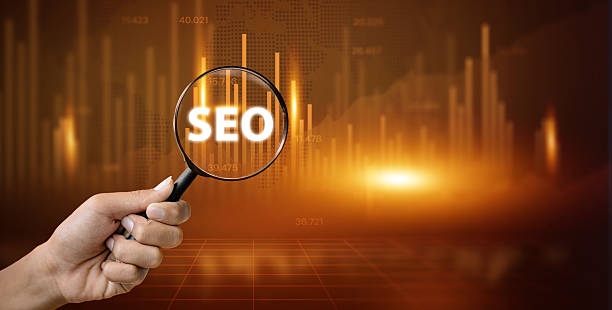
On-page SEO extends beyond content and keywords to include specialized and technical aspects that directly impact site performance and ranking.
Page loading speed is one of the most critical factors; today’s users expect pages to load quickly, and Google ranks faster sites better.
Optimizing images, compressing CSS and JavaScript files, and utilizing browser caching are strategies to increase speed.
Mobile-Friendliness is another key factor.
With the significant increase in searches via mobile devices, your site must be fully responsive to provide an optimal user experience across all screen sizes.
Site Architecture should also be logical and understandable for search engine crawlers.
Using an XML Sitemap helps Google discover and index all your important pages.
These aspects may be hidden from the user’s view, but they are absolutely essential for a precise analysis of site performance and improvement of its on-page SEO.
Is your site technically ready to achieve the highest rankings?
Are you falling behind in the competition with large online stores?
RasaWeb can bring your business online with professional e-commerce website design, increasing your market share!
✅ Boost brand credibility and customer trust
✅ Easy shopping experience leading to more sales
⚡ Act now to get a free website design consultation!
Content Production Strategies for Effective On-Page SEO
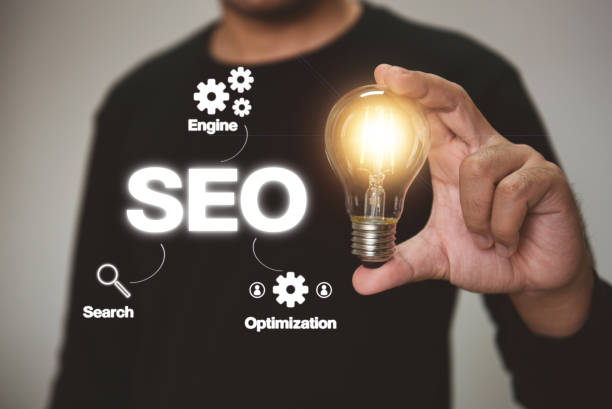
Content production is the beating heart of any on-page SEO strategy.
But how do we create content that is both appealing to users and favored by search engines? The first step is to fully understand user search intent.
Your content should answer users’ questions and address their needs.
This approach transforms your content into a valuable resource and reduces the bounce rate.
Furthermore, comprehensive and in-depth content that covers all aspects of a topic is preferred over superficial content.
Instead of producing multiple short and scattered pages, aim to create long-form, high-quality content that provides real value to the reader.
Regular content updates (Content Freshness) also indicate to search engines that your site is active and dynamic.
News articles, new guides, and updating old information all contribute to this.
Including relevant keywords (LSI Keywords) and synonyms naturally in the text helps search engines better understand the topic and prevents “keyword stuffing” (excessive repetition of keywords).
This is a practical guide for anyone who wants to produce the highest quality content for their site’s on-page SEO and gain targeted traffic.
The Importance of Internal Linking and Improving User Navigation
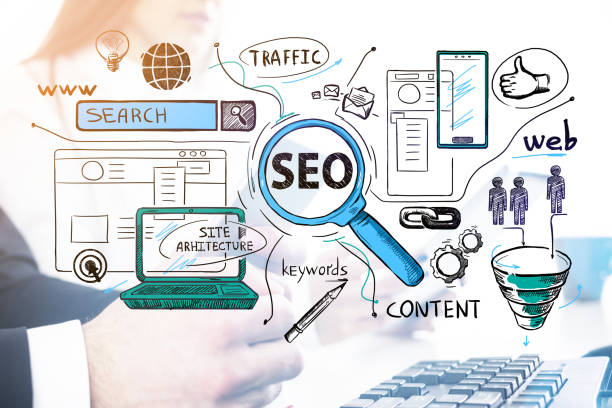
Internal Linking is one of the most overlooked yet powerful aspects of on-page SEO.
This process means creating links between different pages of your website.
Internal links not only help search engines better understand your site’s structure and discover new pages, but they also distribute PageRank (page authority) throughout the site.
Using appropriate and relevant Anchor Text, containing keywords relevant to the destination page, sends stronger signals to search engines.
This significantly helps in understanding the thematic relevance of pages and their connection to each other.
Beyond the SEO aspect, internal linking greatly impacts User Experience (UX) and site navigation.
It enables users to easily move around your site and access relevant information, which leads to increased user time on site and reduced bounce rate.
This is a fundamental educational piece for any webmaster who wants to increase the authority and relevance of their pages in the eyes of search engines.
Is your site’s internal link structure sufficiently optimized? This is a thought-provoking content that you should answer.
Optimizing Images and Multimedia Content for On-Page SEO

Images and other multimedia elements like videos are an integral part of a modern website and significantly impact on-page SEO and user experience.
Optimizing images for loading speed, by compressing them without losing quality, is a crucial step.
Using Alt Text (Alternative Text) for images is essential.
Alt Text not only helps search engines understand the image content (leading to image SEO), but it is also important for users with visual impairments and screen readers.
Appropriate naming of image files with relevant keywords is also recommended.
For videos, in addition to optimizing size and format, using video Schema Markup can help search engines better understand video details and display them in video search results.
This is a specialized guide to ensure that all your visual and audio content is optimized as best as possible for search engines and users.
Proper optimization of multimedia content can drive significant traffic to your site through image and video search.
| Content Type | Optimization Action | Why it’s important? |
|---|---|---|
| Images | Compress size, use descriptive Alt Text, and appropriate file naming | Increases site speed, improves accessibility, helps rank in image search |
| Videos | Appropriate hosting (e.g., YouTube), use video Schema Markup, provide text transcript | Better discoverability in video search, increases user dwell time, accessibility |
| Infographics | Alt text, compression, high shareability | Attracts backlinks, social media sharing, visual appeal |
User Experience and Its Impact on On-Page SEO

Perhaps at first glance, User Experience (UX) might not seem directly part of on-page SEO, but the truth is, these two concepts are deeply intertwined.
Google increasingly relies on user behavioral signals for ranking pages.
A site with excellent user experience engages users more, increases their dwell time, reduces bounce rate, and improves conversion rates.
All of these send positive signals to search engines, indicating the quality and value of your content.
Responsive Design, easy navigation, readable and engaging content, and fast loading speed are all elements that contribute to both UX and on-page optimization.
In essence, investing in improving user experience is investing in SEO.
This is an important analysis that shows how changes in Google’s algorithms have further emphasized the importance of UX.
Did you know that recent Google updates place a special emphasis on Core Web Vitals, which are directly related to user experience? This is news that every SEO specialist should pay attention to.
Does your current website convert visitors into customers, or does it drive them away? Solve this problem forever with professional corporate website design by RasaWeb!
✅ Build credibility and powerful branding
✅ Attract target customers and increase sales
⚡ Get a free consultation now!
Tools and Metrics for Measuring On-Page SEO Success
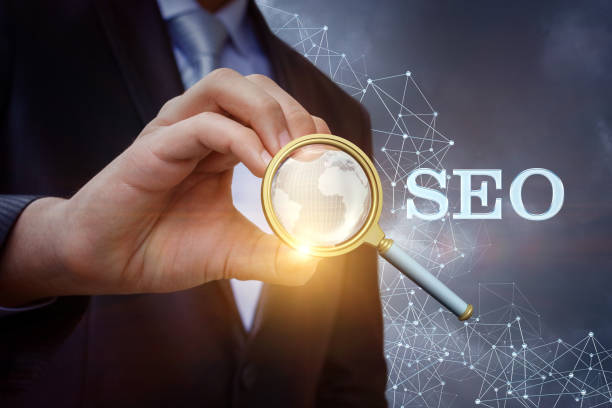
To ensure the effectiveness of on-page SEO efforts, it’s essential to use the right tools and continuously monitor metrics.
Google Search Console is a specialized and free tool that provides vital information about your site’s performance in search results, indexing issues, and internal and external links.
Google Analytics is also an excellent tool for monitoring site traffic, user behavior (such as bounce rate and dwell time), and traffic sources.
Paid tools like Ahrefs, Semrush, and Moz also offer deeper insights into keywords, your competitors, and on-page optimization opportunities.
Metrics to monitor include keyword rankings, organic traffic, click-through rate (CTR), bounce rate, and user dwell time on the site.
Regular monitoring of these metrics helps you adjust your strategies and quickly respond to changes.
This is a comprehensive guide for evaluating performance and identifying strengths and weaknesses in your on-page SEO.
Common Mistakes in On-Page SEO and How to Avoid Them

On the path to on-page SEO optimization, there are some common mistakes that can render your efforts fruitless.
Identifying and avoiding these mistakes is crucial for long-term success.
One of the most prevalent errors is keyword stuffing.
This not only harms user experience but is also penalized by search engines.
Natural and logical use of keywords is always preferred.
Ignoring image and multimedia content optimization is another major mistake; these elements can slow down your site and eliminate ranking opportunities in image search.
Duplicate Content across different pages of the site can confuse search engines and harm your ranking.
The absence of sufficient and relevant internal links also prevents search engine crawlers from fully navigating your site and properly distributing authority value.
Neglecting site speed and mobile compatibility are also catastrophic errors, as these factors directly impact user experience and ranking.
By avoiding these common pitfalls, you can harness the full potential of your on-page SEO and stay a step ahead of the competition.
This is a practical explanatory and educational guide for every webmaster.
Frequently Asked Questions
| Question | Answer |
|---|---|
| What is On-page SEO? | On-page SEO refers to a set of actions performed within a website and on its page content to achieve better rankings in search results. |
| Why is On-page SEO important for a website? | On-page SEO helps search engines better understand your page content and assess its relevance. It also provides a better user experience for visitors. |
| What are the most important On-page SEO factors? | Key factors include keyword optimization, content quality, Title Tag, Meta Description, URL structure, Heading Tags (H1-H6), internal linking, and image optimization. |
| What role does the Title Tag play in On-page SEO? | The Title Tag is one of the most important On-page SEO factors that displays your page title in search results and browser tabs. It should include the main keyword and be engaging. |
| What is the importance of Meta Description in On-page SEO? | The Meta Description provides a summary of the page content, and although it doesn’t directly affect ranking, it can increase the click-through rate (CTR) by enticing users to click. |
| How are keywords used in On-page SEO? | Keywords are phrases users employ to search for information in search engines. Proper and natural use of them in content helps the search engine identify the page’s topic. |
| What is internal linking, and what are its benefits in On-page SEO? | Internal linking refers to creating links between different pages within a website. This helps distribute page authority, assists search engine robots in crawling, and improves user experience. |
| How does image optimization affect On-page SEO? | Image optimization includes compressing size, using appropriate Alt tags, and proper file naming. This improves page loading speed and helps search engines understand image content. |
| What does high-quality content mean in On-page SEO? | High-quality content means content that is comprehensive, accurate, unique, up-to-date, and user-friendly, and addresses users’ needs. |
| What role does URL structure play in On-page SEO? | Readable, short, and keyword-inclusive URLs help search engines and users better understand page content and improve user experience. |
And other services of RasaWeb Advertising Agency in the field of advertising
Smart Digital Advertising: A creative platform for improving digital branding with precise audience targeting.
Smart UI/UX: A fast and efficient solution for improving SEO ranking with a focus on marketing automation.
Smart Content Strategy: Transform click-through rate increase with the help of Google Ads management.
Smart Marketing Automation: A fast and efficient solution for increasing sales with a focus on attractive UI design.
Smart Data Analysis: Professional optimization for campaign management using attractive UI design.
And over hundreds of other services in the field of internet advertising, advertising consultation, and organizational solutions
Internet Advertising | Advertising Strategy | Advertorial
? RasaWeb Afarin Digital Marketing Agency, accompanying you on the fast track to growing your business with professional services such as corporate website design and SEO optimization.
📍 Tehran, Mirdamad Street, next to Bank Markazi, Kazerun Jonoubi Alley, Ramin Alley, No. 6

